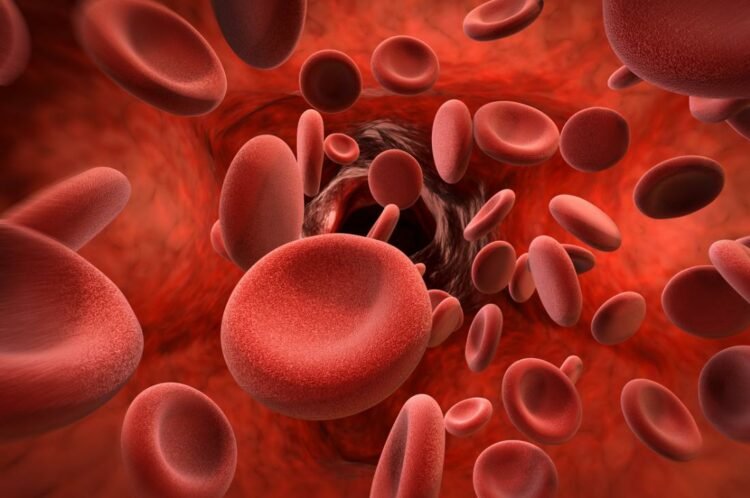By Dr. Vasanth Thamodaran
History books, from as early as 2nd century AD, indicate knowledge of a mysterious bleeding disease that mostly affected men. Hemophilia, as we know it now, wreaked havoc through generations in families that carried the disease. In the early 1900’s life expectancy for those afflicted with hemophilia was 13 years. We’ve come a long way in managing hemophilia since then and may now even be at the cusp of having a cure.
The two major subtypes, hemophilia A and B, are caused by mutations in genes found on the X chromosome, predominantly affecting males with a frequency of 1 in 5,000 and 1 in 30,000 males, respectively. These mutations lead to the deficiency or absence of certain blood clotting factors, resulting in excessive bleeding in case of injury. Excluding cases of bleeding caused due to external injury, the majority of complications are associated with the musculoskeletal system, resulting in progressive joint damage and disability. But any instances of bleeding in the central nervous system or vital organs can be life-threatening.
A global survey published by the World Federation of Hemophilia (WFH) in 2019-2020 showed that India, with 23,666 cases, had the highest number of registered hemophilia cases, followed by the U.S. with 18,008 cases. Out of the 23,666 cases, about 19,690 cases were hemophilia A (83%), 3,150 were hemophilia B (13%) and about 826 (3.4%) were of an unknown type. However, given the frequency of disease occurrence, the number of cases is likely to be vastly underreported.
Typically, the first step in diagnosing hemophilia is a rapid blood test that evaluates clotting time in a patient’s blood sample. Genetic analysis of genes coding factors VIII (FVIII) and IX (FIX), associated with hemophilia A and B, respectively, can further reveal the severity of the condition. Prenatal testing for women who are carriers of the disease is also extremely important. Accurate diagnosis and early treatment greatly contribute to giving hemophiliacs a chance to lead near-normal lives.
Once the missing clotting factor is identified, patients can be treated with replacement therapy using either blood-derived or recombinant clotting factors. Preventive treatment with clotting factors has shown to effectively reduce the number of bleeding episodes. According to the WFH 2019 report, the median global per capita FVIII usage is 1.058 IU. This number indicates the availability of treatment products and diagnosis rates between countries. In India this remains at 0.298 IU, whereas it is 7.105 IU in the US.
In India, replacement therapy using blood-derived products costs between 15-20 INR/unit. A hemophiliac patient will require up to 50,000 units of anti-hemophilic factor (AHF) every year. This means that a patient may have to spend up to 10,00,000 INR every year to manage the disease, making this highly effective treatment an expensive option.
The Hemophilia Federation India (HFI), a non-profit organization, in collaboration with the WFH, has been instrumental in providing clotting factor concentrates as humanitarian aid. In fact, the organization covers about 85% of the country with either complete or partial support for on-demand AHF based therapy.
It is also important to note that treatment with blood-derived clotting factors comes with a risk of contracting other life-threatening infections, such as HIV and hepatitis C. Though this risk has substantially reduced since the 1980s, some cases are still prevalent. The WFH report indicates that 77 and 159 hemophilia patients had HIV and hepatitis C, respectively, in India.
Treatment with recombinant clotting factors must be administered 2-3 times a week as they have short half-lives. Recent developments in protein engineering research have produced modified stable versions of AHFs and monoclonal antibody-based products that can bypass the requirement for FVIII. These AHFs have an extended half-life with bioavailability of up to 30 days and therefore may not need to be administered frequently. But they are also prone to inactivation by inhibitors.
Emicizumab, a monoclonal, humanized, antibody-based product, helps overcome this in hemophilia A patients; it promotes blood clotting without the need for FVIII. It was launched in India in 2019, but its clinical benefits are yet to be studied in Indian patients.
Irrespective of whether clotting factors are blood-derived or recombinant, replacement therapy has dramatically improved quality of life in hemophilia patients. But a one-shot treatment can offer hemophiliacs relief from the need for lifelong interventions. Gene therapy of somatic cells has the potential to make this a reality. It involves introducing the missing or modified clotting factor gene in patients with the help of a modified and harmless virus. Clinical trials with gene therapy have shown promising results with patients no longer needing replacement therapy for the duration in which they were followed up. The first hemophilia gene therapy clinical trial was conducted by BioMarin Pharmaceutical Inc.
The gene therapy drug named Roctavian used an adeno-associated virus (AAV) to deliver FVIII gene expressing constructs to the liver. After treatment, patients showed 19 to 164% elevation in FVIII from normal levels and were eventually able to discontinue FVIII protein therapy. The drug is currently in phase 3 of clinical trials. For hemophilia B, somatic gene therapy clinical trials, also based on the AAV technology, conducted by Spark therapeutics and UniQure were able to restore levels of FIX up to 80% and they are currently entering phase 3 clinical trials. These life-changing interventions would likely cost several million USD. Indigenously developed therapeutic strategies can greatly cut down costs and benefit patients in India.
Our research institutes have the capacity and expertise to be centres of innovation. With the rapid progress we’ve witnessed in genetic research in recent years, the time is ripe for a renewed focus on developing cures for inherited diseases. We have now within our reach the capability to abate lifelong suffering.
Author: INSPIRE Faculty Fellow, Tata Institute for Genetics and Society (TIGS), Institute for Stem Cell Science and Regenerative Medicine (inStem)







